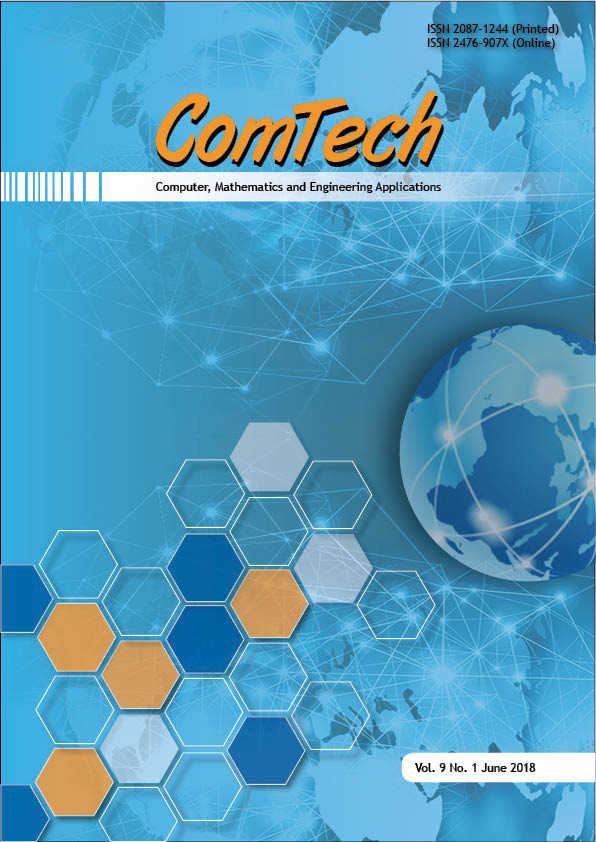Factors Affecting Users’ Acceptance of E-Billing System in Surakarta Tax Office
DOI:
https://doi.org/10.21512/comtech.v9i1.4621Keywords:
user acceptance, E-billing system, Unified Theory of Acceptance and Use of Technology (UTAUT), Partial Least Square-Structural Equation Modelling (PLSSEM)Abstract
This research aimed to analyze factors that affected the acceptance of e-billing system of Surakarta tax office with Unified Theory of Acceptance and Use of Technology (UTAUT) model. The survey was done on electronic billing (e-billing) system users in Surakarta. Partial Least Square-Structural Equation Modelling (PLSSEM) was used to analyze the users’ intention in adopting e-billing system. The result indicates that two UTAUT variables (performance expectancy and social influence) affect the system usage significantly. Meanwhile, the other variables like effort expectancy and facilitating conditions do not affect e-billing system adoption in Indonesia.
References
Ajzen, I., & Fishbein, M. (1980). Understanding attitudes and predicting social behaviour. Prentice-Hall.
Azmi, A. C., & Bee, N. L. (2010). The acceptance of the e-filing system by Malaysian taxpayers: A simplified model. Electronic Journal of E-Government, 8(1), 13-22.
Berdykhanova, D., Dehghantanha, A., & Hariraj, K. (2010). Trust challenges and issues of e-government: E-tax prospective. In 2010 International Symposium in Information Technology (ITSim) (Vol. 2, pp. 1015-1019).
Ellyana, D. D., Redy, A., & Hamzah, A. (2009). Variabel anteseden dan konsekuensi pemanfaatan sistem informasi (Studi empiris pada pemerintahan kabupaten di pulau Madura). Jurnal Akuntansi dan Keuangan Indonesia, 6(1), 71-88.
Ghozali, I. (2014). Structural Equation Modeling: Metode alternatif dengan Partial Least Square(PLS) (4th ed.). Semarang: Badan Penerbit Universitas Diponegoro.
Hair, Jr., J. F., Hult, G. T. M., Ringle, C. M, & Sarstedt, M. (2014). A primer on Partial Least Squares Structural Equation Modeling (PLS-SEM). California: SAGE Publications.
Indrajit, R. E. (2002). Electronic government: Strategi pembangunan dan pengembangan sistem pelayanan publik berbasis teknologi digital. Andi.
Lubis, A. S. (2015). Publikasi artikel. Retrieved from https://bppk.kemenkeu.go.id/id/
Khalil, O. E. (2014). The adoption of the Traffic Violation E-Payment System (TVEPS) of Kuwait. Electronic Journal of E-Government, 12(1), 3-21.
Kumar, V., Mukerji, B., Butt, I., & Persaud, A. (2007). Factors for successful e-government adoption: A conceptual framework. Electronic Journal of E-government, 5(1), 63-76.
Nugroho, R. A. (2015). Electronic government adoption in developing countries: The case of the Indonesian electronic procurement system (PhD Thesis). The University of Queensland.
Pujiani, M. (2013). Analisis efektivitas penggunaan e-system terhadap penerimaan pajak di KPP Pratama Palembang Ilir Timur. Jurnal Akuntansi, 1-9.
Rahayu, S., & Lingga, I. S. (2011). Pengaruh modernisasi sistem administrasi perpajakan terhadap kepatuhan wajib pajak (Survei atas wajib pajak badan pada KPP Pratama Bandung†Xâ€). Jurnal Akuntansi, 1(2), 119.
Ratminto, & Winarsih. (2007). Manajemen pelayanan: Pengembangan model konseptual, penerapan citizen’s charter dan standar pelayanan minimal. Yogyakarta: Pustaka Pelajar.
Sabandi, M., Pambudi, D., & Sohidin. (2009). Penerapan modifikasi model TAM guna peningkatan mutu layanan e-government pemerintah daerah melalui rekayasa sistem untuk mencapai good governance dan daya saing ekonomi lokal. Surakarta: LPPM UNS.
Singarimbun, M., & Effendi. (2005). Metode penelitian survey. Jakarta: LP3ES.
Tangke, N. (2005). Analisa penerimaan penerapan Teknik Audit Berbantuan Komputer (TABK) dengan menggunakan Technology Acceptance Model (TAM) pada Badan Pemeriksa Keuangan (BPK) RI. Jurnal Akuntansi dan Keuangan, 6(1), 10-30.
United Nations. (2012). E-Government survey. Retrieved from https://publicadministration.un.org/egovkb/Portals/egovkb/Documents/un/2012-Survey/Complete-Survey.pdf
Venkatesh, V., Morris, M. G., Davis, G. B., & Davis, F. D. (2003). User acceptance of information technology: Toward a unified view. MIS Quarterly, 27(3), 425-478.
Wang, X. (2012). Factors influence citizen adoption for government e-tax service. Retrieved from http://oru.diva-portal.org/smash/record.jsf?pid=diva2:528165
Wangpipatwong, S., Chutimaskul, W., & Papasratorn, B. (2008). Understanding citizen’s continuance intention to use e-government website: A composite view of technology acceptance model and computer self-efficacy. Electronic Journal of E-Government, 6(1), 55-64.
Winarno, W. (2002). Sistem informasi manajemen. Yogyakarta: UPP STIM YKPN.
Yusup, M., Hardiyana, A., & Sidharta, I. (2015). User acceptance model on e-billing adoption: A study of tax payment by government agencies. Asia Pacific Journal of Multidisciplinary Research, 3(4), 150-157.
Downloads
Published
How to Cite
Issue
Section
License
Authors who publish with this journal agree to the following terms:
a. Authors retain copyright and grant the journal right of first publication with the work simultaneously licensed under a Creative Commons Attribution License - Share Alike that allows others to share the work with an acknowledgment of the work's authorship and initial publication in this journal.
b. Authors are able to enter into separate, additional contractual arrangements for the non-exclusive distribution of the journal's published version of the work (e.g., post it to an institutional repository or publish it in a book), with an acknowledgment of its initial publication in this journal.
c. Authors are permitted and encouraged to post their work online (e.g., in institutional repositories or on their website) prior to and during the submission process, as it can lead to productive exchanges, as well as earlier and greater citation of published work.
 USER RIGHTS
 All articles published Open Access will be immediately and permanently free for everyone to read and download. We are continuously working with our author communities to select the best choice of license options, currently being defined for this journal as follows:




















